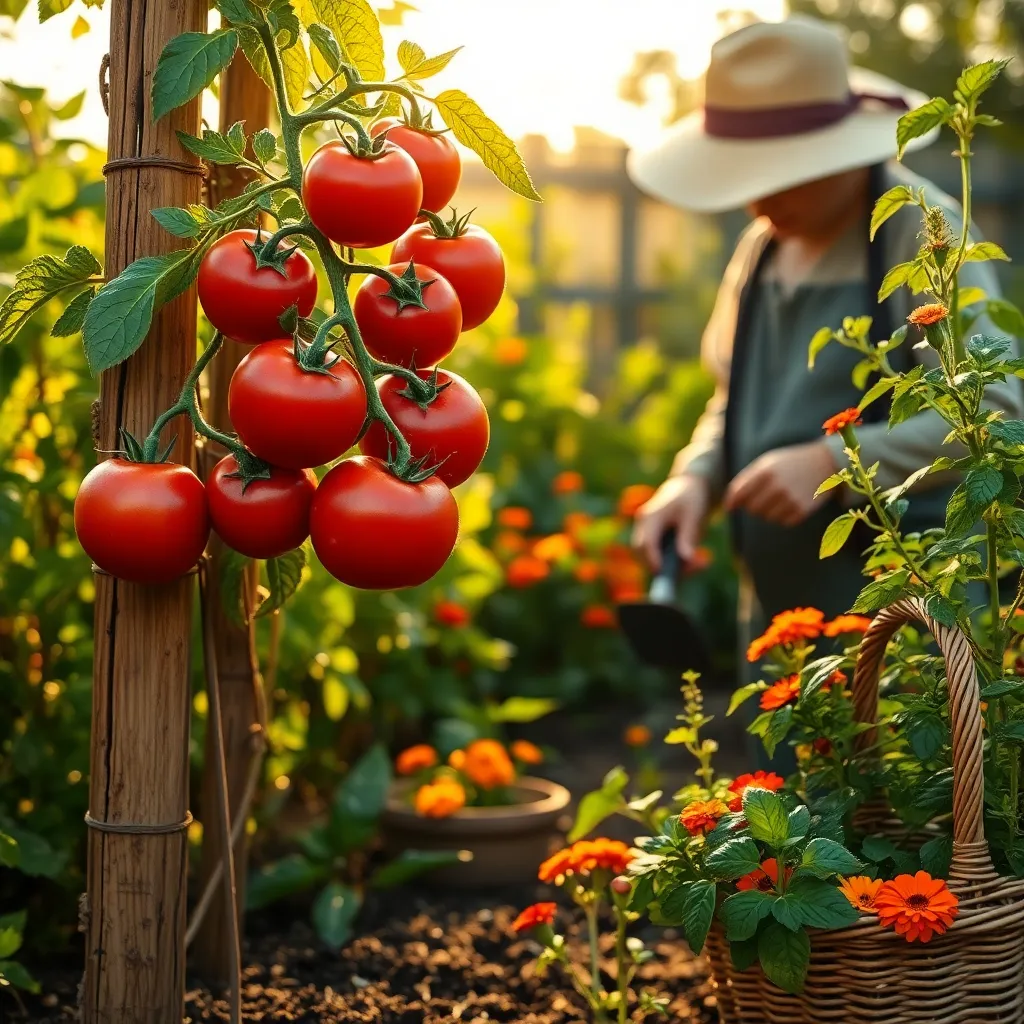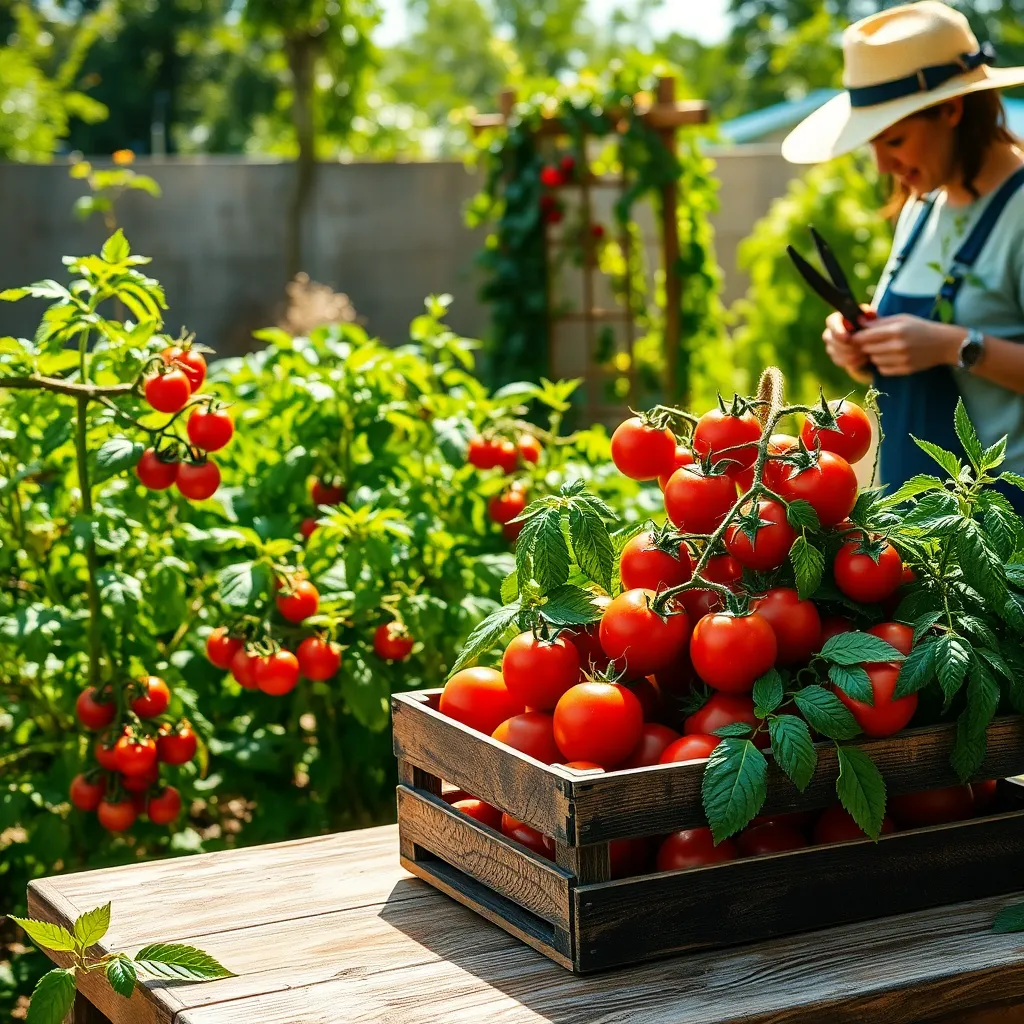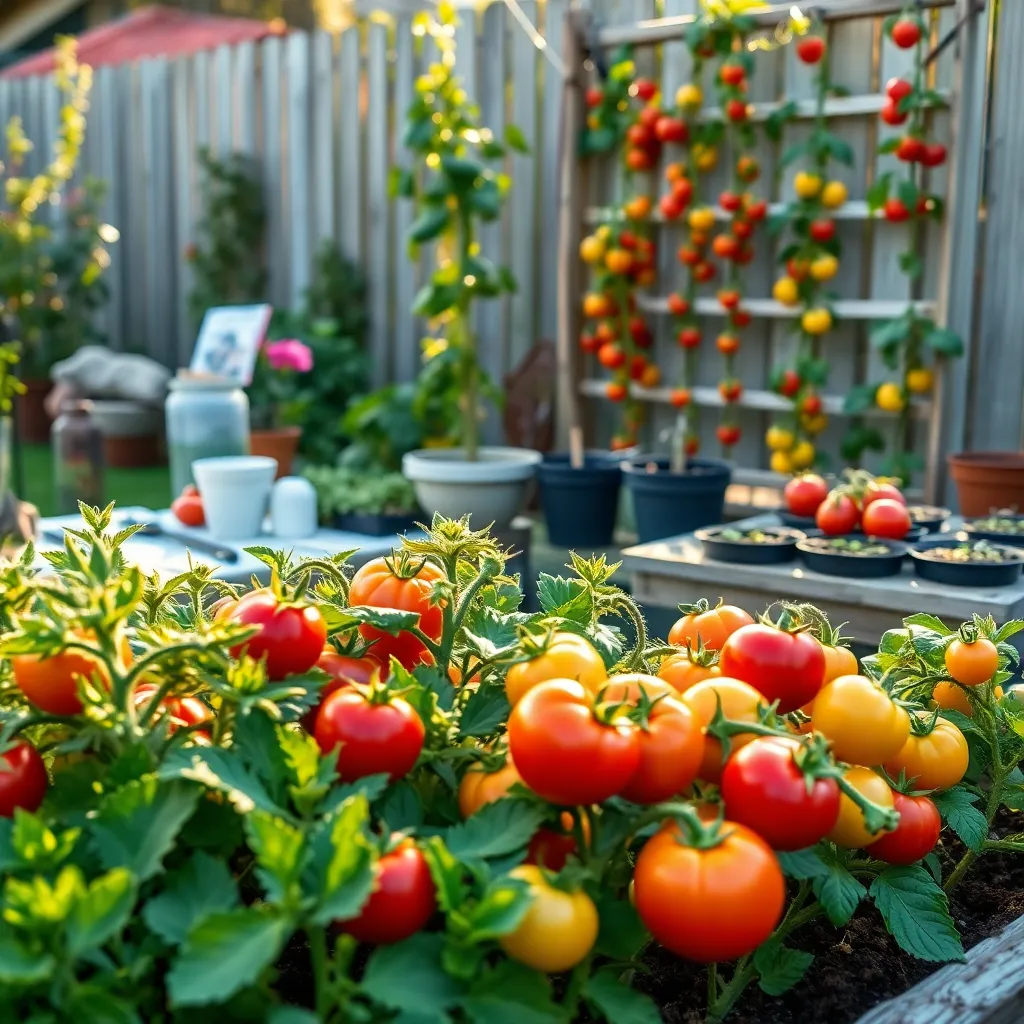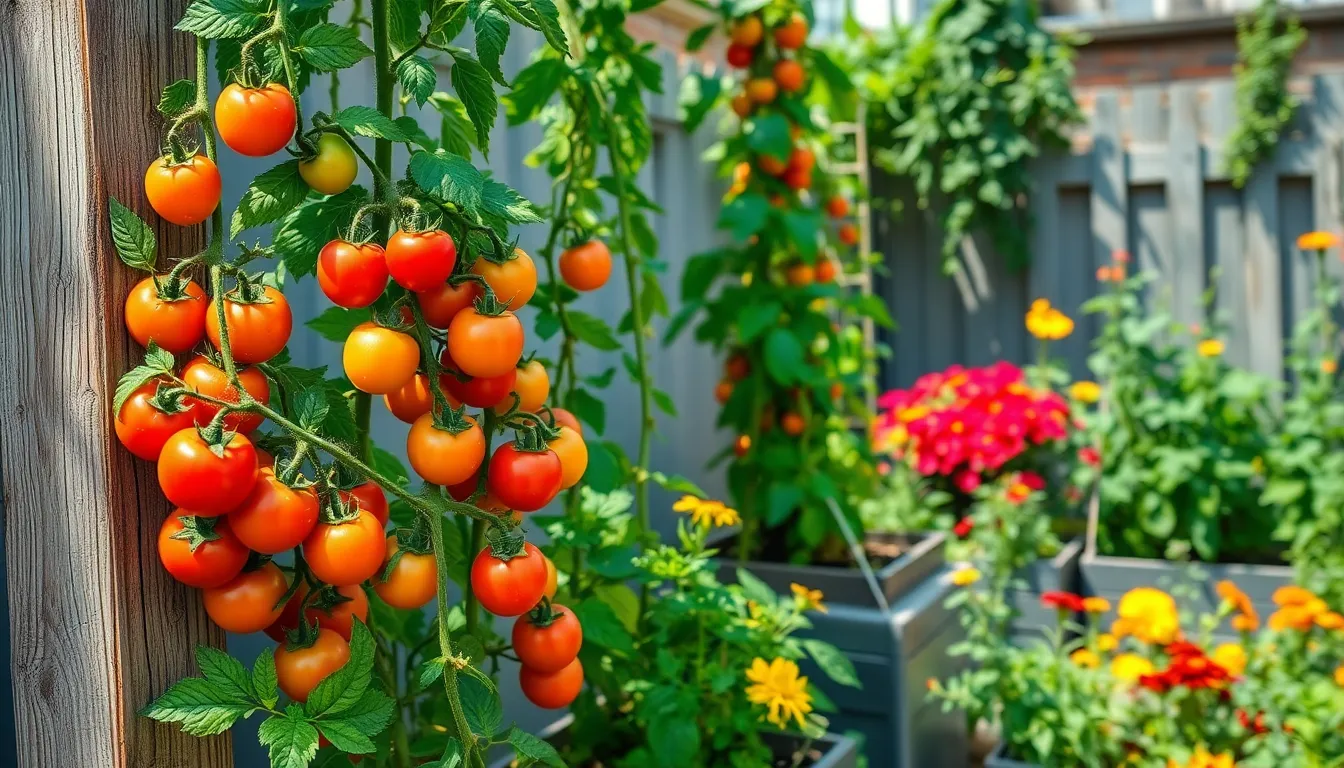Imagine walking into your garden on a sun-drenched morning, the air rich with the scent of fresh earth and the vibrant promise of a fruitful harvest. Growing your own tomatoes offers not only this sensory delight but also the satisfaction of nurturing a plant that rewards you with an abundance of flavorsome, juicy fruits. Whether you’re a budding gardener or have cultivated your green thumb over the years, tomatoes present an exciting challenge and an opportunity to enhance both your gardening skills and your dinner table.
Tomatoes are more than just a staple in countless recipes; they’re a gateway to understanding the joys and intricacies of gardening. From selecting the perfect variety to mastering the art of pruning, this article will guide you through the essential steps to ensure your tomato plants thrive. You’ll learn how to choose the right soil, the importance of sunlight, and the secrets to a bountiful harvest. By the end, you’ll be equipped with the knowledge to grow tomatoes that are not only delicious but also the envy of every gardener on your block.
Nutritional Benefits of Homegrown Tomatoes

Homegrown tomatoes offer a wealth of nutritional benefits that can greatly enhance your diet. Rich in vitamins A, C, and K, tomatoes also provide essential minerals like potassium and folate, making them a nutritious addition to any meal.
To maximize these nutritional benefits, focus on growing your tomatoes in nutrient-rich soil. Consider using a mix of compost and well-draining soil to ensure your plants receive the necessary nutrients for optimal growth.
Watering is crucial for healthy tomato plants, and it’s best to water them consistently but not excessively. Aim for a deep watering once a week, ensuring the soil remains moist but not waterlogged, to prevent issues like root rot and blossom-end rot.
For gardeners looking to boost their crop’s nutritional content, consider adding a layer of mulch around the base of the plants. Mulching helps retain moisture and regulates soil temperature, which in turn supports the growth of nutrient-packed fruits.
Cost Savings from Growing Your Own

Growing your own tomatoes can lead to significant cost savings over time. While the initial investment in seeds or seedlings, soil, and containers might seem modest, the long-term savings on store-bought tomatoes can be substantial.
To maximize your savings, start by selecting the right tomato variety for your climate. Heirloom tomatoes such as ‘Brandywine’ or ‘Cherokee Purple’ are not only flavorful but also quite productive, providing a bountiful harvest season after season.
Beginner gardeners should focus on maintaining optimal growing conditions to ensure a healthy yield. Ensure your tomato plants receive at least 6-8 hours of sunlight daily and are planted in well-draining soil enriched with organic compost.
Watering is crucial for tomato growth, and efficient water use can further enhance your savings. Mulching around the base of the plants helps retain moisture, reducing the need for frequent watering and keeping your water bill in check.
For those with more experience, consider advanced techniques like companion planting to maximize space and nutrient use. Planting basil or marigolds nearby not only saves on space but can also improve tomato flavor and deter pests naturally.
Enhancing Flavor with Home Cultivation

Growing your own tomatoes can dramatically enhance their flavor, turning them into a culinary delight. The secret lies in the ability to control the growing environment directly, ensuring optimal conditions for the sweetest and juiciest tomatoes.
Firstly, focus on soil quality, which is a key factor in flavor development. Use a soil rich in organic matter, as it enhances nutrient uptake and provides a perfect growing medium.
To achieve a robust flavor profile, ensure your tomatoes get plenty of sunlight—at least six to eight hours daily. This not only boosts their natural sweetness but also intensifies the natural flavors within the fruit.
Consistent watering is crucial, but it’s important not to overdo it. Water deeply and infrequently to promote strong root growth, which will help your plants access nutrients more effectively and produce tastier tomatoes.
For those looking to take their tomato-growing skills to the next level, consider experimenting with heirloom varieties. These often have unique, complex flavors that are not found in store-bought hybrids, offering an exciting twist to home-grown produce.
Finally, don’t overlook the power of companion planting to enhance flavor naturally. Basil, for instance, is known to improve the growth and taste of tomatoes when planted nearby, providing a dual benefit for your garden.
Environmental Impact of Homegrown Produce

Growing your own tomatoes significantly reduces your carbon footprint compared to store-bought produce. By cultivating tomatoes at home, you eliminate the emissions associated with transportation and packaging, making a positive impact on the environment.
When you choose to grow tomatoes at home, you’re also supporting biodiversity. Home gardens often host a variety of plants and insects, creating a healthy ecosystem that benefits both your tomatoes and the surrounding environment.
To ensure your tomato plants thrive, select a well-draining soil that is rich in organic matter. Adding compost to your garden beds will not only improve soil structure but also enhance nutrient content, supporting the sustainable growth of your plants.
Water conservation is another environmental benefit of homegrown tomatoes. Implementing a drip irrigation system can significantly reduce water waste, as it delivers moisture directly to the plant roots with minimal evaporation.
For gardeners looking to take their environmental impact a step further, consider saving seeds from your healthiest tomato plants. Seed saving allows you to cultivate resilient plants adapted to your local climate, reducing dependency on commercial seed production.
Variety Selection for Best Results

Choosing the right tomato variety is crucial for achieving the best results in your garden. With hundreds of varieties available, consider your local climate, soil type, and intended use when making a selection.
For those new to gardening, starting with a reliable, disease-resistant variety such as ‘Celebrity’ or ‘Roma’ can increase your chances of success. These varieties are known for their resilience and productivity, making them an excellent choice for beginners.
On the other hand, experienced gardeners might enjoy experimenting with heirloom varieties like ‘Brandywine’ or ‘Cherokee Purple’. These varieties offer unique flavors and colors, but they may require more attentive care to prevent common issues like cracking or blight.
Regardless of the variety you choose, ensure your tomatoes are planted in well-draining soil rich in organic matter. Regular watering is essential—aim to keep the soil consistently moist, but avoid waterlogging, which can lead to root rot.
Consider using a balanced fertilizer to promote healthy growth, applying it every four to six weeks during the growing season. Additionally, providing sturdy support, such as cages or stakes, will help your plants stay upright and improve air circulation, reducing the risk of disease.
Conclusion: Growing Success with These Plants
In exploring ‘Why You Should Grow Tomatoes,’ we delved into five essential relationship concepts: nurturing growth, embracing patience, understanding individual needs, fostering supportive environments, and celebrating small victories. Just as tomatoes thrive with care, relationships flourish when given time, attention, and understanding. As an immediate next step, reflect on one area in your relationship where you can apply these nurturing principles. Perhaps it’s offering more encouragement, setting aside quality time, or simply listening more intently.
Remember, building a strong relationship is an ongoing journey. Bookmark this article to revisit these concepts whenever you need a gentle reminder of the power of nurturing growth. By cultivating these principles, you’re laying the foundation for lasting relationship success. Your commitment to growth will not only enrich your current relationship but also set the stage for enduring bonds in the future.
Embrace the opportunity to foster a thriving relationship garden. Empower yourself with these insights, and take the first step toward a more connected, fulfilling partnership today. Save this guide as your go-to resource for continued relationship growth and success.


